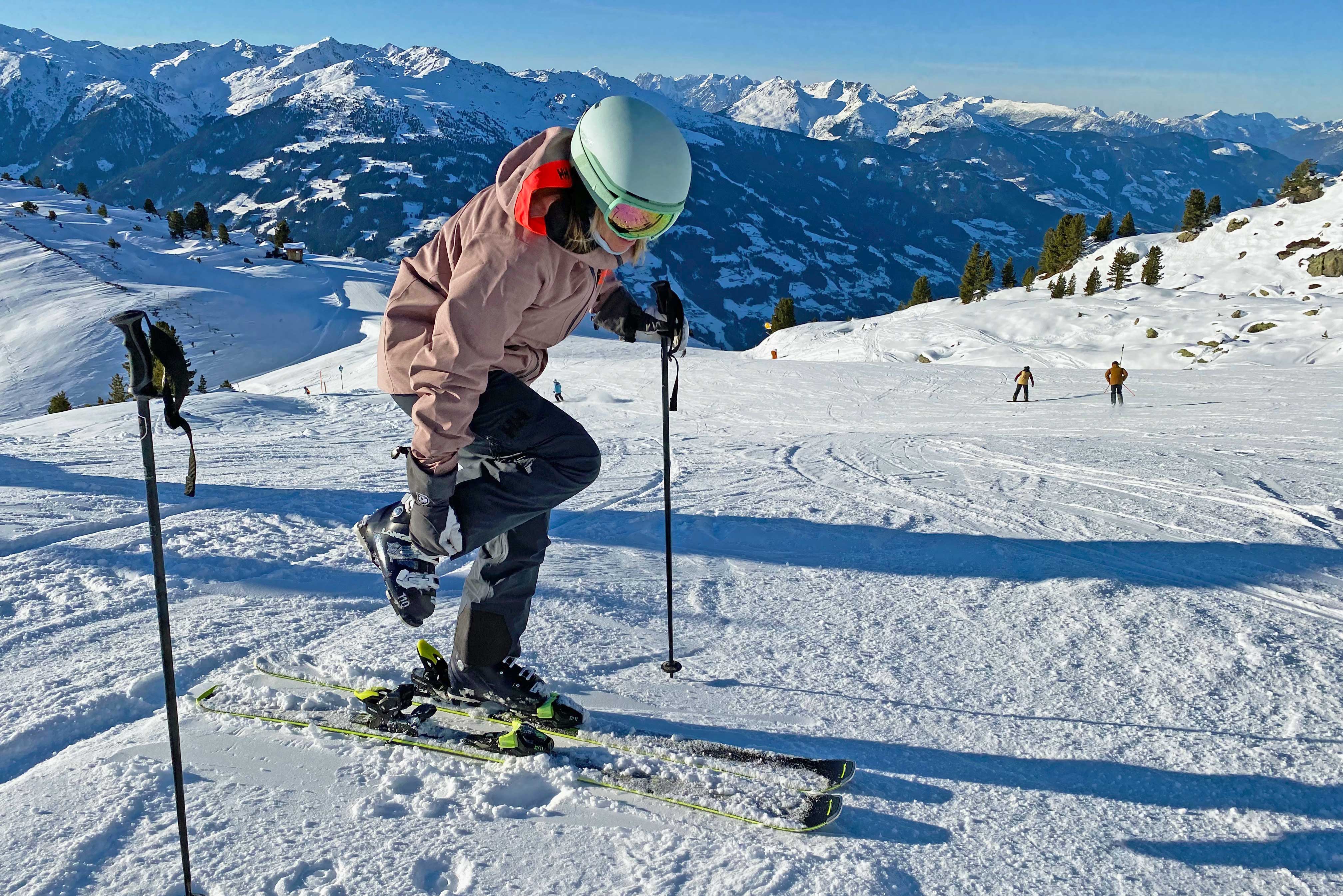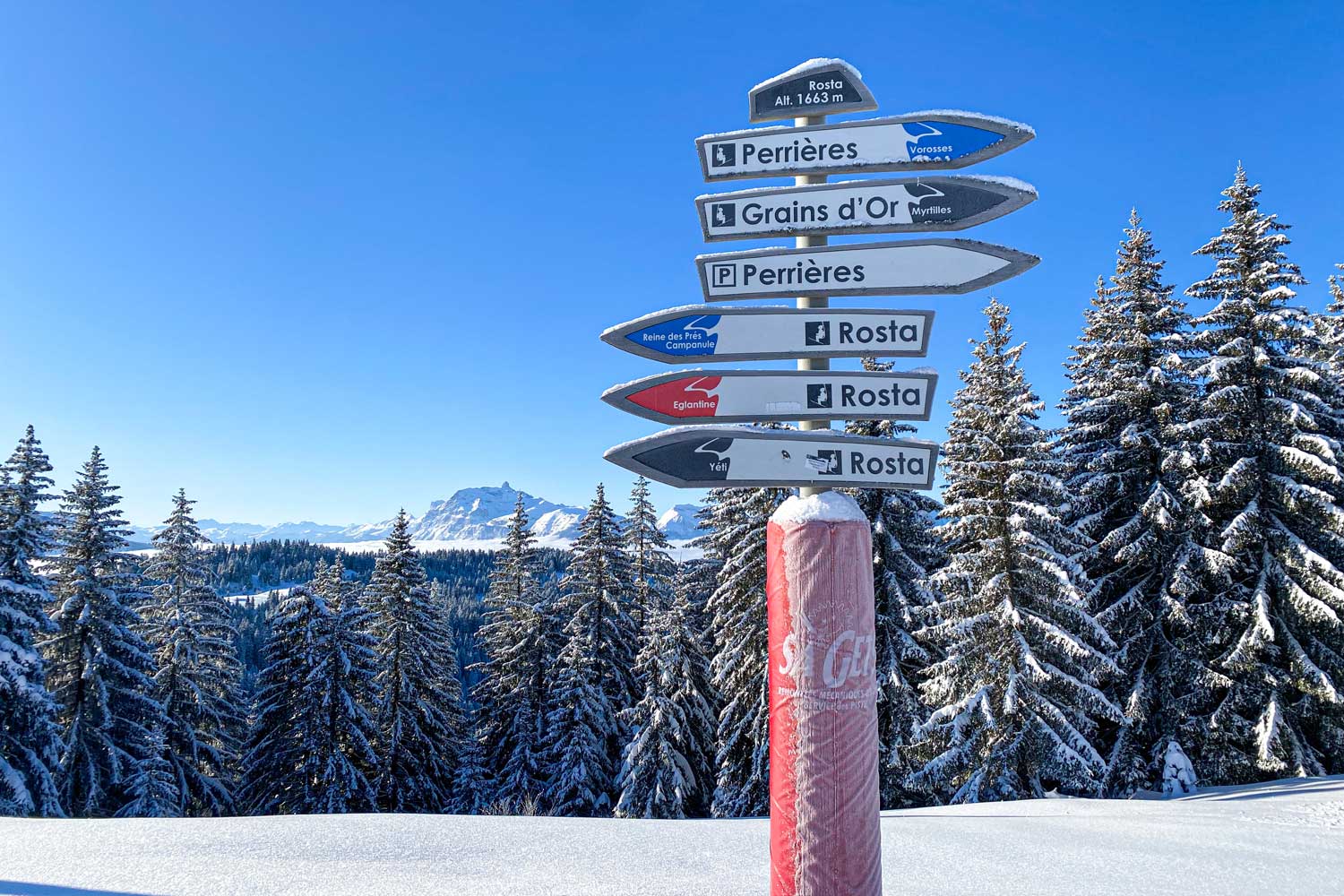
Photo courtesy of Dawson Ross
It’s sport like no other, a sport that fills you with a rush of adrenaline as you sail down the side of a mountain in a whirl of white powder. Skiing has come a long way since its origins as a convenient mode of transport, and the Alps has almost always been at the forefront. Responsible for popularizing the sport and then making it accessible to the middle class, the Alps have overseen the rise of skiing from a rich person’s holiday novelty to one of Europe’s favourite pastimes. Today, hordes of ski enthusiasts fill the slopes every winter, skiing in the footsteps of the pioneers from over a century ago.
Skiing, then and now
Research suggests that skis predate the wheel. Skiing was certainly a convenient way for prehistoric people to travel, enabling them to quickly cover long distances while hunting, and there are cave drawings dating back more than 6000 years to prove this. In Norway, skiing has been an integral part of the culture for millennia. Ever wanted to know the story behind how skiing went from being a primitive means of transportation to a winter sport activity beloved by people around the globe? Here’s a timeline of the most important milestones.
Pre-1900's: An ancient sport is revitalized
1760’s:
Norwegian army used skiing competitions as part of their training.
Mid-1800’s:
Sondre Norheim of Telemark, Norway pioneered the development of the first toe-and-heel-strap, as well as the first skis with sidecuts. These innovations revolutionized skiing, making it possible for skiers to ski steeper slopes and more complicated terrain without worrying about the skis falling off. The new style of skis was brought to the masses in 1868 at a competition in Oslo.
1864:
Johannes Badrutt of the Engadiner Kulm Hotel,
St. Moritz
convinced his British clients to stay the winter instead of leaving at the end of the summer as was their custom. The four families who accepted his offer started the British winter sport trend among the upper class, which at first focused on sledging and skating but eventually moved onto skiing. Since the sport required the funds to spend weeks at a time at fancy holiday resorts in the Alps, skiing remained restricted to the upper class for a long time.
1880’s:
The public discovered alpine skiing, which was more fun than Nordic skiing, and the Alps enjoyed a huge leap in popularity.
Vintage skiing postcard from Scandinavia © RememberingLetters Wordpress
Early 1900's: Alpine skiing grows in popularity
1908:
Robert Winterhalder invented the first ski lift, the improved version of which he would display at the International Winter Sports Exhibition in Triberg in 1910.
1908-1909:
Thomas Cook started offering the very first skiing holiday packages to the English public.
1910:
The International Skiing Commission in Christiania was founded, which would later become the FIS.
1911:
The Roberts of Kandahar Cup, the world’s first downhill ski race, was held in
Montana, Switzerland.
1920’s:
Ian Fleming spent much of his youth at
Kitzbühel, and later glorified skiing in his James Bond stories.
James Bond poster, "On Her Majesty's Secret Service"
Mid-1900's: Skiing takes over the Olympics
1922:
Arnold Lunn organised the first modern slalom race at
Mürren, Switzerland.
1924:
The First Winter Olympics were held in
Chamonix
and featured Nordic skiing as an event. British winter sport enthusiasts started to flock to Chamonix and
Val d'Isère. The FIS (Fédération Internationale de Ski) was established, out of what had been formerly known as the International Skiing Commission in Christiania.
1931:
First FIS Alpine Ski World Championships held at Mürren, Switzerland.
1936:
Alpine skiing made it into the Winter Olympics at
Garmisch-Partenkirchen, Germany. Across the ocean, James Curran of the Sun Valley Resort in America invented the chairlift. There had already been rope tows and cable cars, but the chairlift revolutionized the mass uphill transport idea. As more and more inventions made skiing easier and more affordable, the sport’s popularity started to spread outside the upper class.
The invention of the chairlift made skiing much more accessible
1950's to present: Skiing is here to stay
1950’s and 1960’s:
Skiing continued to grow in popularity, thanks in large part to innovations such as skis with metal, releasable bindings, better snow clothing, piste bashers and snowmaking machines. Jean-Claude Killy took the world by storm, winning three Olympic gold medals in 1968 plus four world championships over the course of the decade.
1965:
Sherman Poppen invented the precursor to the snowboard as a way to surf on the snow. The “Snurfer” was introduced in the US the following year.
1966:
Lange created the first modern ski boot, plastic and with buckles, which saw Nancy Greene win the World Cup the next year. Plastic ski boots were one of the most important innovations in ski technology, allowing for better control of the boot and thus the ski.
1988:
Eddie the Eagle became the first person since 1929 to represent Britain in Olympic ski jumping. The beloved athlete came last in the 70m and 90m jumps but conquered the hearts of the nation!
Photo courtesy of Dawson Ross
It’s sport like no other, a sport that fills you with a rush of adrenaline as you sail down the side of a mountain in a whirl of white powder. Skiing has come a long way since its origins as a convenient mode of transport, and the Alps has almost always been at the forefront. Responsible for popularizing the sport and then making it accessible to the middle class, the Alps have overseen the rise of skiing from a rich person’s holiday novelty to one of Europe’s favourite pastimes. Today, hordes of ski enthusiasts fill the slopes every winter, skiing in the footsteps of the pioneers from over a century ago.
Skiing, then and now
Research suggests that skis predate the wheel. Skiing was certainly a convenient way for prehistoric people to travel, enabling them to quickly cover long distances while hunting, and there are cave drawings dating back more than 6000 years to prove this. In Norway, skiing has been an integral part of the culture for millennia. Ever wanted to know the story behind how skiing went from being a primitive means of transportation to a winter sport activity beloved by people around the globe? Here’s a timeline of the most important milestones.
Pre-1900's: An ancient sport is revitalized
1760’s:
Norwegian army used skiing competitions as part of their training.
Mid-1800’s:
Sondre Norheim of Telemark, Norway pioneered the development of the first toe-and-heel-strap, as well as the first skis with sidecuts. These innovations revolutionized skiing, making it possible for skiers to ski steeper slopes and more complicated terrain without worrying about the skis falling off. The new style of skis was brought to the masses in 1868 at a competition in Oslo.
1864:
Johannes Badrutt of the Engadiner Kulm Hotel,
St. Moritz
convinced his British clients to stay the winter instead of leaving at the end of the summer as was their custom. The four families who accepted his offer started the British winter sport trend among the upper class, which at first focused on sledging and skating but eventually moved onto skiing. Since the sport required the funds to spend weeks at a time at fancy holiday resorts in the Alps, skiing remained restricted to the upper class for a long time.
1880’s:
The public discovered alpine skiing, which was more fun than Nordic skiing, and the Alps enjoyed a huge leap in popularity.
Vintage skiing postcard from Scandinavia © RememberingLetters Wordpress
Early 1900's: Alpine skiing grows in popularity
1908:
Robert Winterhalder invented the first ski lift, the improved version of which he would display at the International Winter Sports Exhibition in Triberg in 1910.
1908-1909:
Thomas Cook started offering the very first skiing holiday packages to the English public.
1910:
The International Skiing Commission in Christiania was founded, which would later become the FIS.
1911:
The Roberts of Kandahar Cup, the world’s first downhill ski race, was held in
Montana, Switzerland.
1920’s:
Ian Fleming spent much of his youth at
Kitzbühel, and later glorified skiing in his James Bond stories.
James Bond poster, "On Her Majesty's Secret Service"
Mid-1900's: Skiing takes over the Olympics
1922:
Arnold Lunn organised the first modern slalom race at
Mürren, Switzerland.
1924:
The First Winter Olympics were held in
Chamonix
and featured Nordic skiing as an event. British winter sport enthusiasts started to flock to Chamonix and
Val d'Isère. The FIS (Fédération Internationale de Ski) was established, out of what had been formerly known as the International Skiing Commission in Christiania.
1931:
First FIS Alpine Ski World Championships held at Mürren, Switzerland.
1936:
Alpine skiing made it into the Winter Olympics at
Garmisch-Partenkirchen, Germany. Across the ocean, James Curran of the Sun Valley Resort in America invented the chairlift. There had already been rope tows and cable cars, but the chairlift revolutionized the mass uphill transport idea. As more and more inventions made skiing easier and more affordable, the sport’s popularity started to spread outside the upper class.
The invention of the chairlift made skiing much more accessible
1950's to present: Skiing is here to stay
1950’s and 1960’s:
Skiing continued to grow in popularity, thanks in large part to innovations such as skis with metal, releasable bindings, better snow clothing, piste bashers and snowmaking machines. Jean-Claude Killy took the world by storm, winning three Olympic gold medals in 1968 plus four world championships over the course of the decade.
1965:
Sherman Poppen invented the precursor to the snowboard as a way to surf on the snow. The “Snurfer” was introduced in the US the following year.
1966:
Lange created the first modern ski boot, plastic and with buckles, which saw Nancy Greene win the World Cup the next year. Plastic ski boots were one of the most important innovations in ski technology, allowing for better control of the boot and thus the ski.
1988:
Eddie the Eagle became the first person since 1929 to represent Britain in Olympic ski jumping. The beloved athlete came last in the 70m and 90m jumps but conquered the hearts of the nation!















